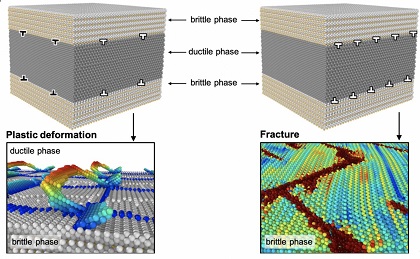Pearlitic steel, or pearlite, is one of the most durable materials in the world. This microstructure occurs in steel and can be made into steel wire.
You might have seen these wires bundled together into ropes for suspension bridges or steel cords for tire reinforcement. They are also prevalent in piano wires.
Kanazawa University students in Japan have been studying its atomic structure and have made a few first-time discoveries. They hope the atomic properties present in pearlite could be applied to newer materials to ensure bridges and buildings sustain less damage during earthquakes.
In their published findings, titled ‘Proposed engineering method could help make buildings and bridges safer,' the researchers report that they were able to ascertain the distance between locations in nanolayer interfaces in pearlite. The university’s news website writes:
“Perlite is made of alternating nanolayers of cementite and ferrite. The cementite helps make it strong, while the ferrite helps make it ductile. However, until now researchers did not know exactly how the two worked together to give pearlite its special quality, or better yet, how to control their working together to engineer an even better material.”
The researchers discovered that the disruptions, or dislocations, in the arrangement of atoms along the interface between a cementite and ferrite layer protect the layers from fracturing or stretching or compression.

Pearlite is often used in the construction of suspension bridges — it helps the bridges withstand shaking, and also supports a lot of weight.
The researchers studied how the material performs under stress. They found that pearlite prevented cracks from forming and spreading at the atomic level. Therefore, its elasticity is guaranteed.
These findings are particularly pertinent to civil engineers in countries affected by seismic activity.
For example, Mexico City in Mexico is located atop an ancient lake. Once an earthquake occurs, the sand and clay sediments in the lake intensify the severity of the shaking.
This leads to immense damage.
With these new pearlite findings in Japan, building materials could be strengthened to withstand severe earthquakes.
Now engineers are equipped with the knowledge of the dislocations in the nanolayer interfaces of pearlite, they can begin experimenting with ways of transferring that atomic makeup into other materials.
Works Cited
“Proposed Engineering Method Could Help Make Buildings and Bridges Safer.” ScienceDaily, ScienceDaily, 17 Jan. 2019, www.sciencedaily.com/releases/2019/01/190117102359.htm.
“金沢大学.” 金沢大学へ移動, www.kanazawa-u.ac.jp/latest-research/64033.
